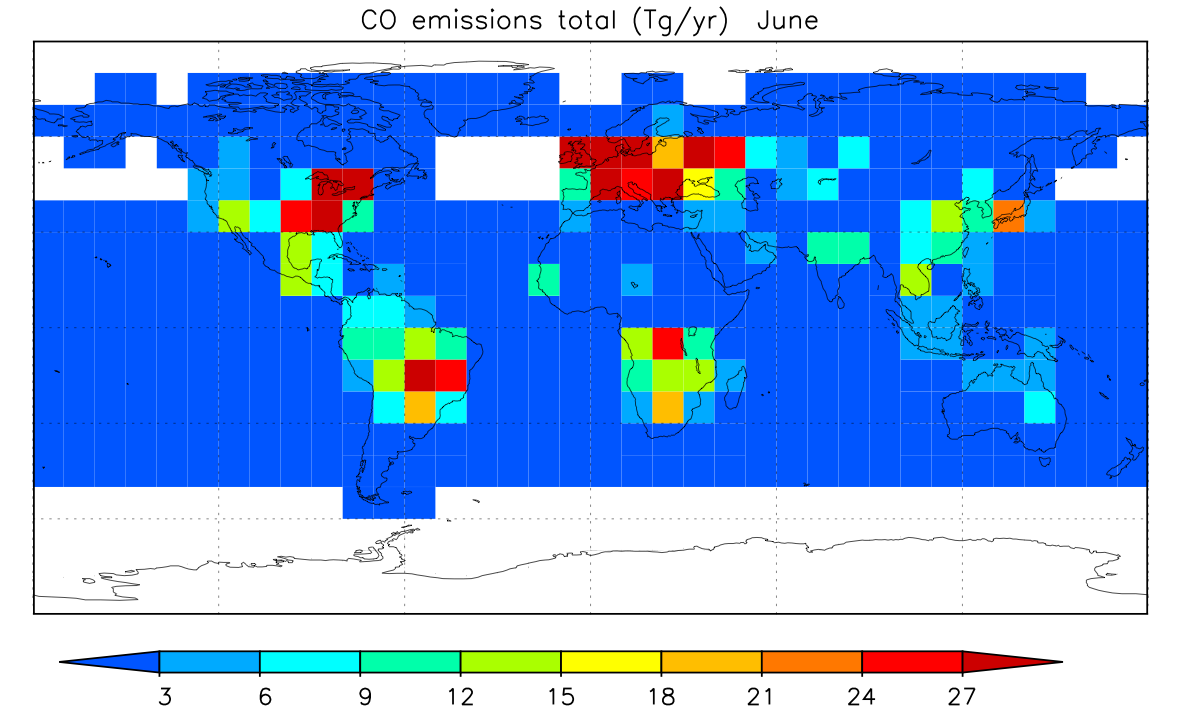
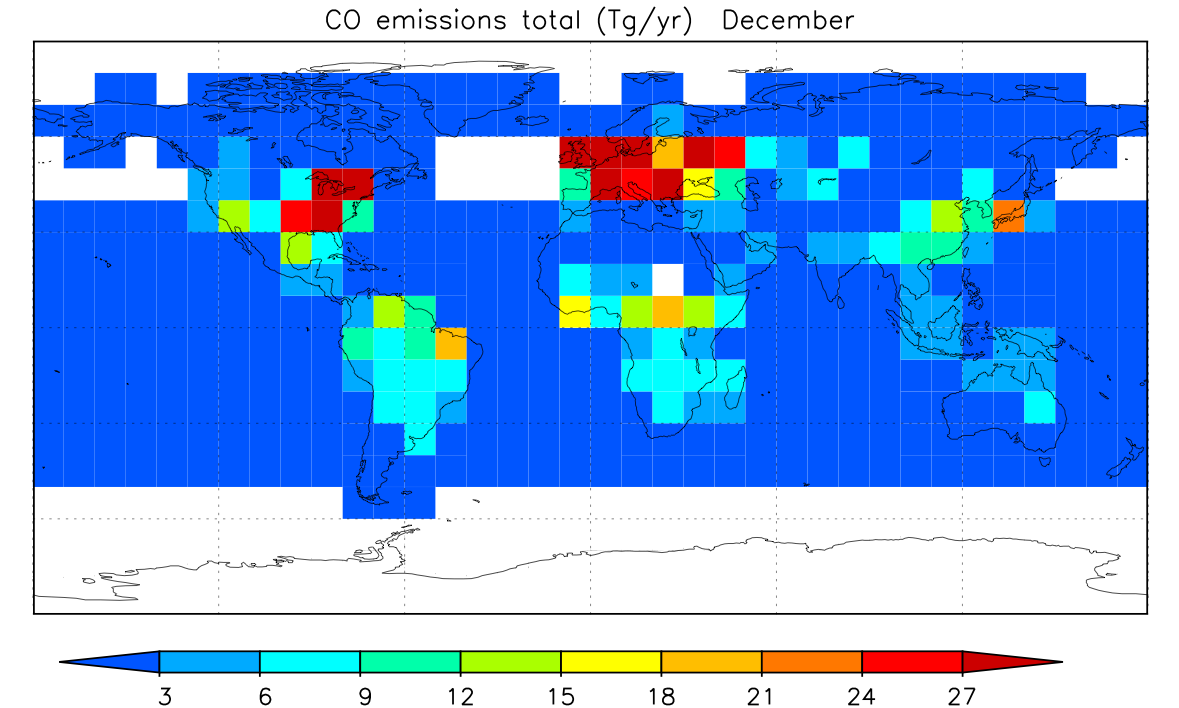
Study the CO budget. Compare simulated CO values to CO measurements. Analyze the contribution of different CO sources to the CO levels in the atmosphere.
Tropospheric CO strongly influences the oxidation efficiency of our atmosphere. More than half the hydroxyl radical (OH) removal from the atmosphere is caused by the reaction with OH. This reaction is also the dominant sink for CO as surface deposition and other reaction pathways are negligible. Biomass burning and fossil fuel combustion are main anthropogenic CO sources that account for about 40% of the global source.
|
Source Category |
CO emission (Tg/year) |
|---|---|
|
Energy use |
540 |
|
Anthropogenic biomass burning |
400 |
|
Wildfires |
30 |
|
Vegetation |
100 |
|
Oxidation of natural CH4 |
250 |
|
Oxidation of anthropogenic CH4 |
595 |
|
Oxidation of natural NMHC |
325 |
|
Oxidation of anthropogenic NMHC |
120 |
|
Oceans |
40 |
|
Total |
2400 |
Increasing CO as a consequence of anthropogenic emissions in the past century has likely contributed to a global depletion of OH and thus a reduction of the oxidation efficiency of the atmosphere. On the other hand, the recent trend reversal of CO, possibly due to a moderation of anthropogenic emissions, may have contributed to a partial recovery of OH levels. Global observations and the quantification of CO changes and its budget are of utmost importance to monitor the state of our atmosphere.
Although the global CO burden of the atmosphere is fairly well known, the estimates of source categories are highly uncertain. Most of the emission estimates have uncertainty ranges of about 50%. For example, the CO yield from non-methane hydrocarbon (NMHC) oxidation in the atmosphere is poorly known. Large quantities of natural NMHC are emitted as isoprene and monoterpenes. Both the emissions of these gases and their reaction products are poorly quantified. If removal of soluble or aerosol forming NMHC reaction intermediates would be important, this would substantially limit the amount of CO released from these compounds. Models can help quantifying these processes by integration of the growing knowledge about sources, transport and chemical mechanisms, and through comparisons with observations.
The lifetime of CO varies considerably in the atmosphere. In the high latitude winter it is very long (>0.5 year) because the OH radical concentrations are very low. At low altitudes in the tropics, where both radiation and water vapor abundance promote OH radical formation, the CO lifetime drops to values less than a month. At mid-latitudes the seasonal cycle is characterized by CO buildup in winter and depletion in summer. On the one hand, CO lives long enough to be transported over considerable distances. On the other hand, its lifetime is short enough that it can be present in the background atmosphere in rather small concentrations.
In this exercise, the CO distribution will be modeled (in a simplified way). CO is treated as a tracer, which is
 |
 |
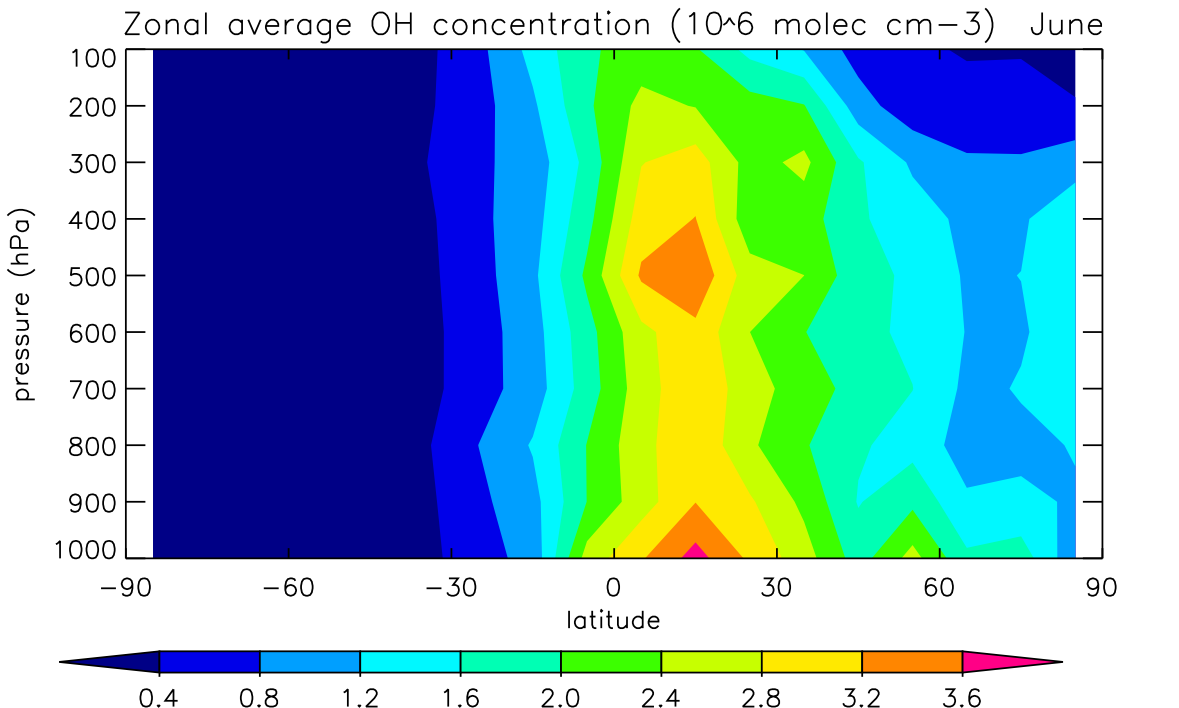 |
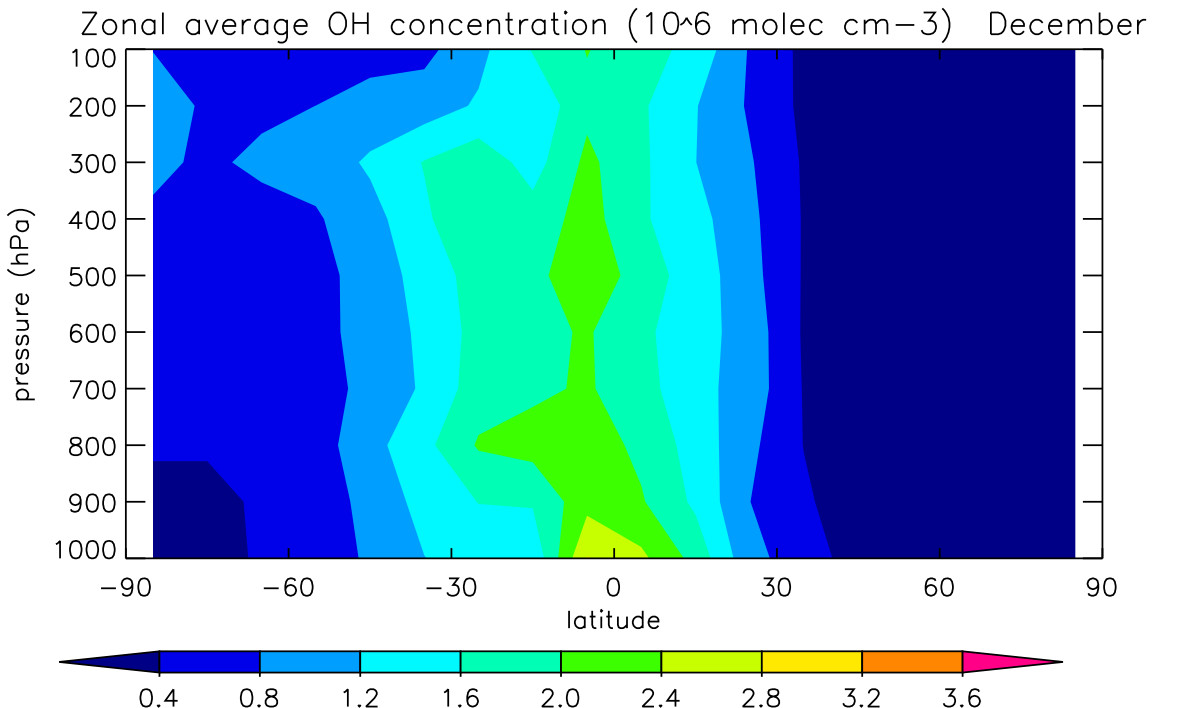 |
CO lives about two months, so a spin-up time of 5 months is used to initiate the model. The pre-calculated OH fields are stored on disk and are used in the input file by the commands:
Precooked emission files are present:
CO is measured mainly by ground based stations. In this exercise, the CO simulations are compared to measurements at the following stations (see map on the right for locations:
Alert (82N, 62W) |
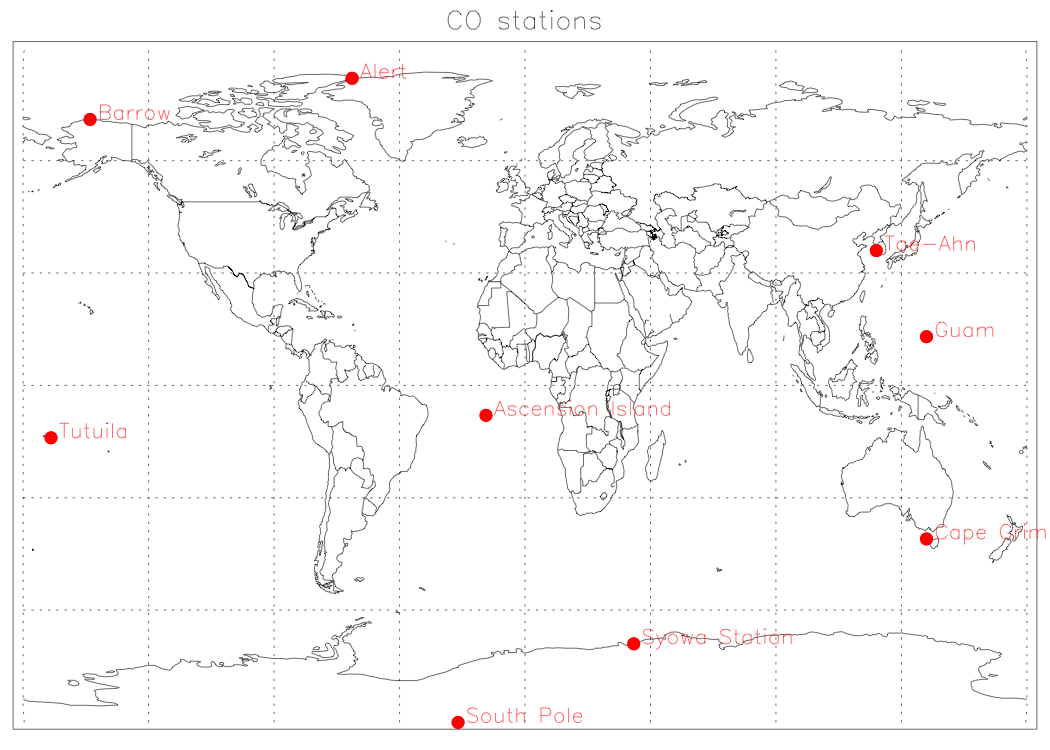
|
Concentration of CO are normally expressed as ppbv, which corresponds to a mixing ratio of 10-9. Due to variability in emissions and variability in the transport to the measurement sites, large year-to-year variability in the CO concentrations is observed for most sites. Only remote stations show a regular pattern.
Since the MOGUNTIA model is climatological and uses only one year of meteorological data (1987), variability in transport cannot be simulated. Also, variability is emissions is not simulated, since the quantification of emissions is quite difficult. For instance, biomass burning has a large year-to-year variability (e.g. Indonesian fires).
In order to study the contribution of the various sources to the CO levels at the stations, we investigate first how much of the CO is generated by methane oxidation. Precooked input files, in which the surface CO emissions are switched off can be used:.
The input files co_budget1.in and co_budget2.in describe a simulation with industrial emissions as the only CO source. Run MOGUNTIA with these input files. Then run MOGUNTIA also with other sources (see figure 3) switched on. For example: to activate only the biomass sources, the input file should look like:
TITLE co_budget_bmb (remember to change the title to generate separate output files)NAME co
MOLMASS 28.0
START_CONCENTRATION 0.0/PREVIOUS (depending on spin up or output generation)
EMISSION FILE co_emissions_bmb.dat
(other emission lines deactivated by a starting blanc)
........etc......
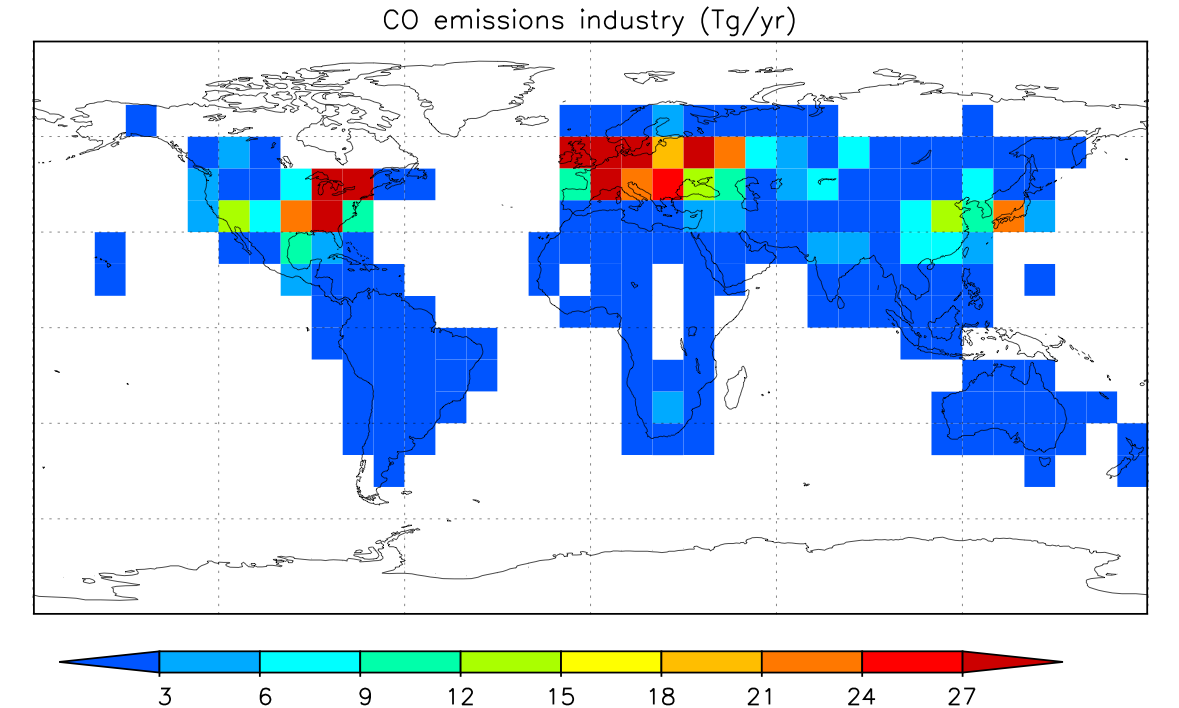 |
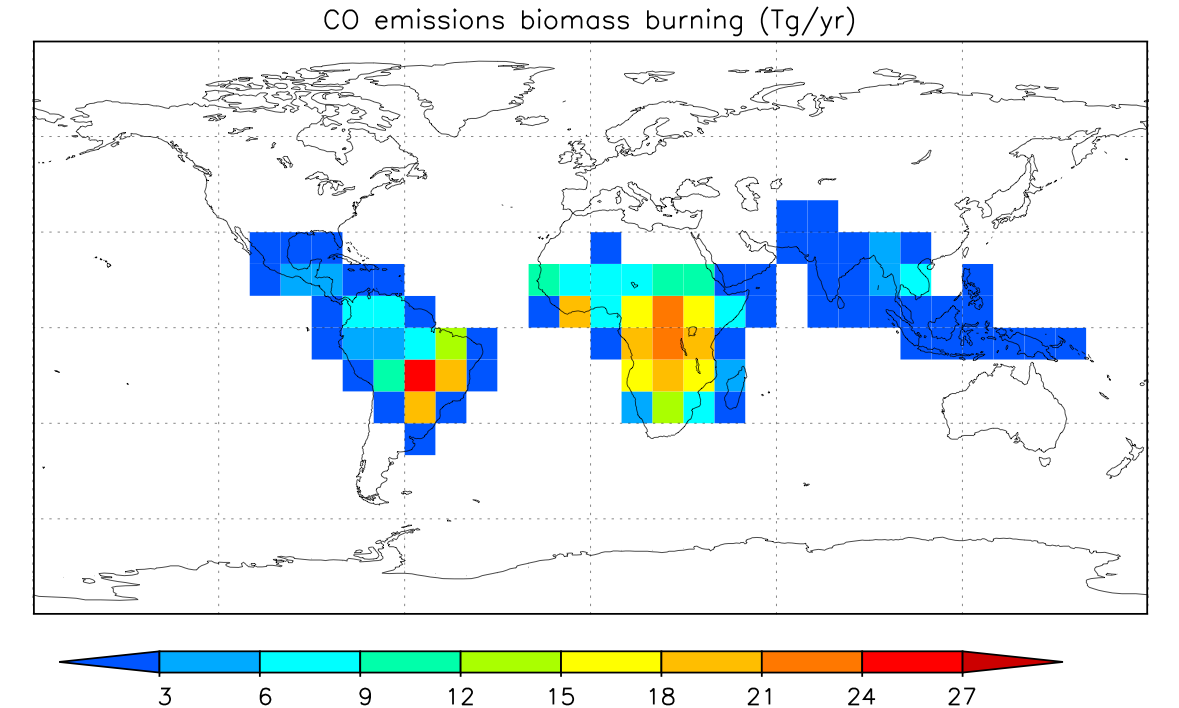 |
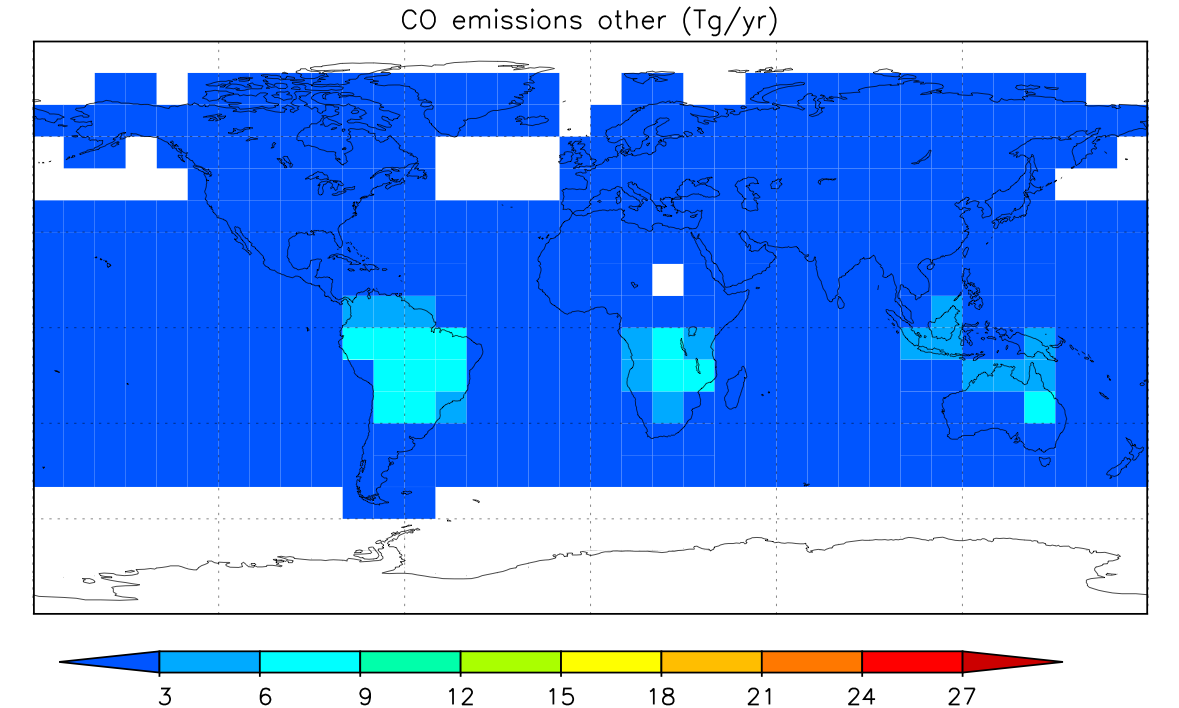 |